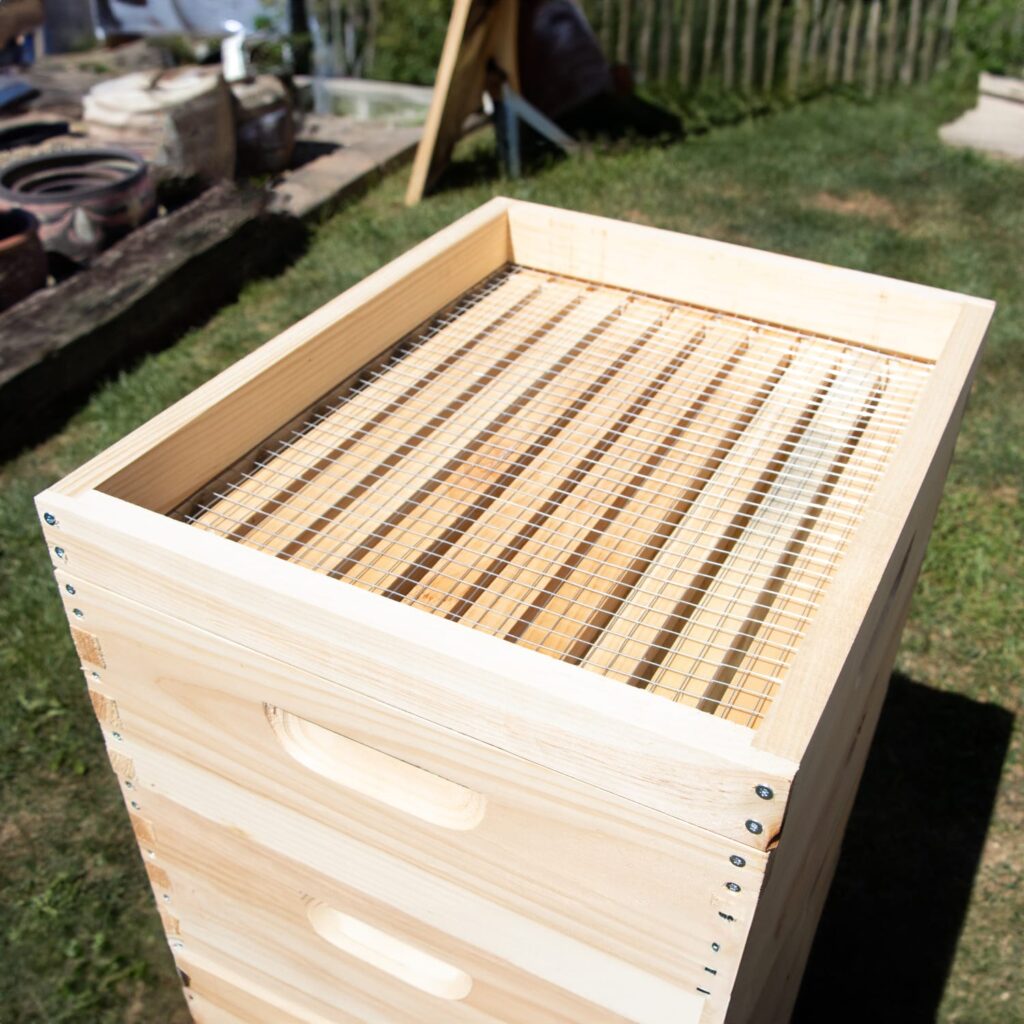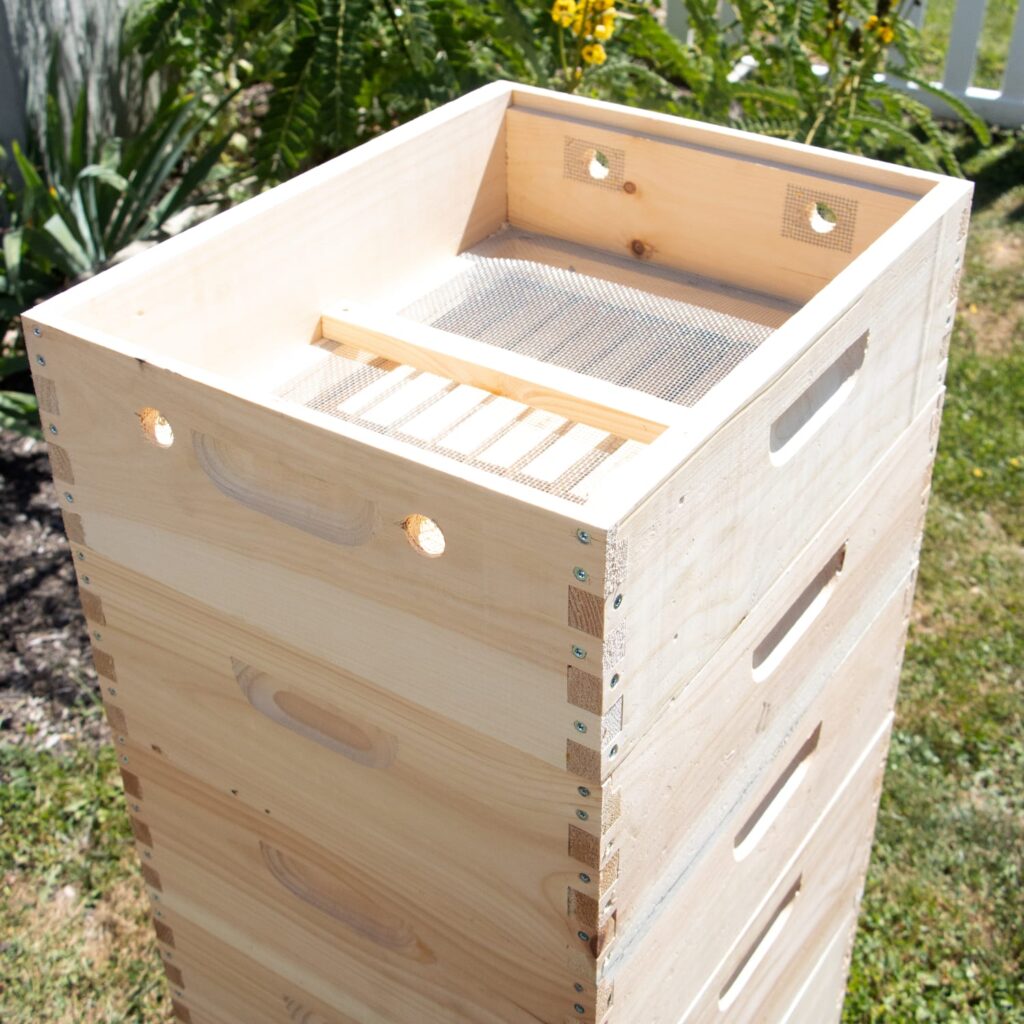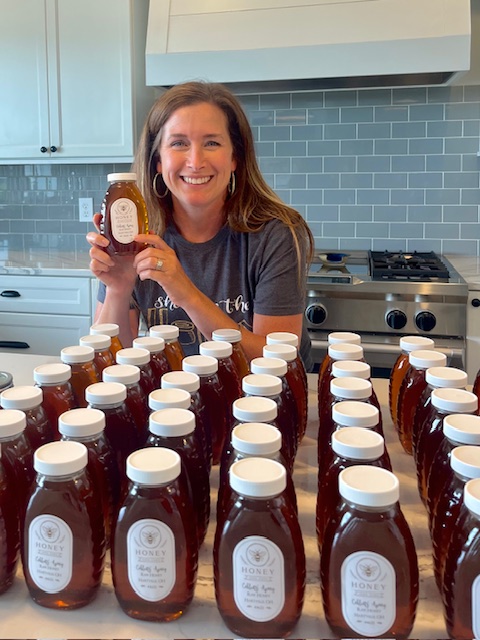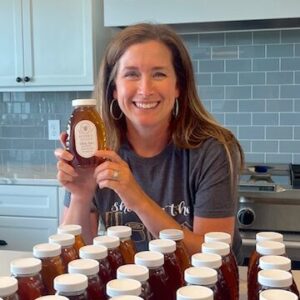The glory of the honey harvest has begun to fade and now it’s time to help your bees prepare for the long cold months of winter. Here in Northeast Ohio, winter’s grasp can take hold for months and what we do now to prepare our bees will help them thrive through winter. Bees typically die out over the winter due to 3 main causes: mites, moisture or starvation. Mite treatments should be done in fall and finished up by now, if you choose to do that. I will discuss what to do to prevent starvation as well as how to help prevent moisture build up in your hives.
Feed Your Bees in Winter
Your hive should have plenty of stores for winter, but in case they don’t then a little help from the beekeeper could save them. During fall, I feed my bees a 2:1 ratio of sugar to water. The bees can store food with the sugar water which they will consume during the winter. Once the daytime temperature drops below 57 degrees Fahrenheit, I stop feeding my bees the sugar water and switch over to a candy board (I will include my recipe at the end). I believe these candy boards have saved my bees multiple times. They are easy to make and a good food insurance policy for your bees. I have some hives that will go through the whole board while others barely touch them. In the spring, the left over candy board can be mixed with water for spring feeding. The candy board not only provides food for your bees but the hardened sugar can also absorb moisture, which helps absorb the extra moisture from the hive. My candy boards all have an entrance, which provides an upper entrance for ventilation. I place my candy board above my top box so the bees can easily access it when needed.

Prevent Condensation in the Hive
Even if your climate is dry during the winter months, you might think you don’t have to worry about condensation, but you do. Hives produce condensation due to the colony’s respiration (warm air) which causes a difference in temperature between the outside of the hive and the temperature of the inside. If the hive is not ventilated, then moisture will build up on the inside cover and eventually freeze when cold enough.
Then, when the weather fluctuates enough to melt the ice, the freezing water will melt and drip on the bees, leading to the demise of the colony. To prevent moisture from building up inside the hive, I make sure my hive is well ventilated. I use an entrance reducer at the entrance of the hive, but always go out after each snow to make sure the entrance is cleared out. Bees naturally die year round, so during winter when the entrance reducer is in place you need to check to make sure the entrance is not backed up with dead bees. I remove my entrance reducer and use the end of my hive tool to scrap out as many bees as I can. I also make sure there is an entrance at the top of the hive. This allows the air to freely flow throughout the hive and expel the extra moisture. I also add another box (often called a quilt box or top feeder) that I fill with an absorbent material like pine shavings, wood shavings or straw. The absorbent material helps absorb moisture and pulls it out from around the inner cover.

Find What Works Best for You
If you talk to three different beekeepers, they will give you three different ways to get your bees through winter. You need to figure out what works best for your colonies and especially what works best for your climate. I have had the most success with adding the candy board above the top box of bees and then adding a quilt box full of wood shavings. Once I add the hive cover on top, I then wrap my hives in tar paper to help produce heat from the sun on those bitterly cold but sunny days. Always make sure you cut a hole in the tar paper at the upper entrance. This helps the bees use less energy to keep warm, which in turn makes them consume less of their stored food and they will hopefully have enough food to get through winter. Finally, I strap my hives down with either bungee cords or ratchet straps because the wind can get really gusty in Northeast Ohio. I did have one hive blow over from the wind, so now I strap them down.
One last word of advice for overwintering your hive would be no matter how badly you want to, DO NOT open the hive to take a peek. If you are curious if they are still alive, then simply put your ear up to the side of your hive and tap on it. When you tap on it they will start buzzing. During those cold months that buzzing sound will be music to your ears. All the hard work you put into getting your bees ready for winter is to help them thrive. Getting your bees to thrive through winter means they will be ready to get to work as soon as the weather breaks and hopefully you will be able to enjoy a great spring honey harvest.

My Candy Board Recipe for 8-Frame Candy Board:
- 16 Cups of Sugar (which is 8 pounds)
- 1/2 Tbsp distilled white vinegar
- 1-1/3 cups water
- 1 Tablespoon Honey Bee Health
Mix ingredients together in a big bowl. Lay candy board on a flat surface that is covered with wax paper. Press the sugar mixture into the candy board. I have a block of wood that I use to push down the sugar mixture and also to help create spaces for ventilation and a space for the entrance. Let candy board rest at room temperature for 24-48 hours until it has hardened. Then it will be ready to be put on your hive.
Editor’s Note: Get more beekeeping tips from Sarah…listen to our podcast.
































